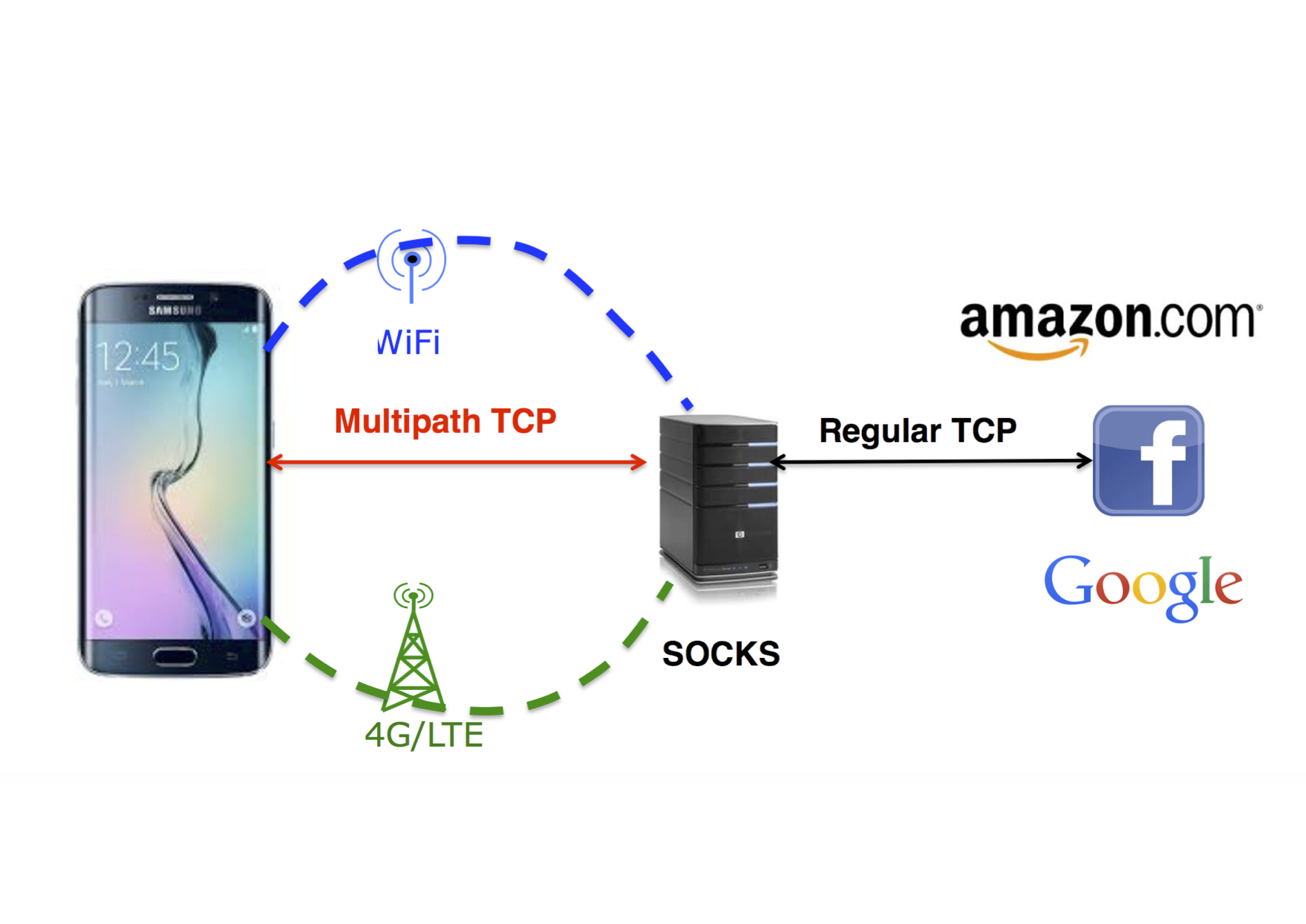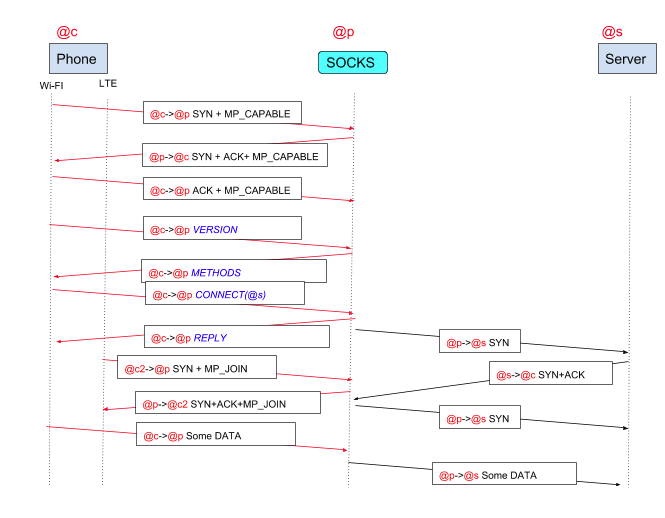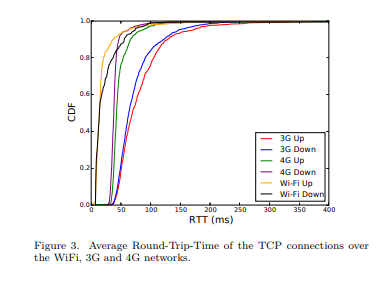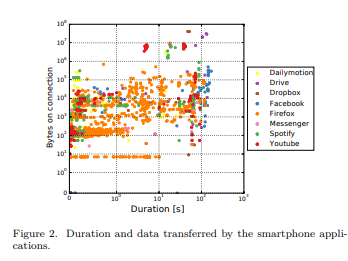SOCKS and Multipath TCP
The main benefit of Multipath TCP is that it enables either the simultaneous utilisation of different paths or provides fast handovers from one path to another. Several deployments of Multipath TCP leverage these unique capabilities of multipath transport. When Apple opted for Multipath TCP in 2013, they could leverage its benefits by enabling it on both their iPhones and iPads and on the servers that support the Siri application. This is the end-to-end approach to deploying Multipath TCP.
However, there are many deployment scenarios where it would be beneficial to use Multipath TCP to interact with servers that have not yet been upgraded to support this new protocol. A first use case are the smartphones willing to combine Wi-Fi and cellular or quickly switch from one to another. Another use case is to combine different access networks to benefit from a higher bandwidth. In large cities, users can often use high bandwidth access links through VDSL, FFTH or cable networks. However, in rural areas, bandwidth is often limited and many home users or SMEs need to combine different access links to reach 10 Mbps or a small multiple of this low bandwidth. Multipath TCP has been used in these two deployments together with SOCKS RFC 1928.
SOCKS is an old application layer protocol that was designed to allow users in a corporate network to access the Internet through a firewall that filters connections. Several implementations of SOCKS exist and a popular one is shadowsocks. In Soutch Korea, the smarpthones that use the Gigapath service interact through a SOCKS server over Multipath TCP as illustrated in the figure below.

This SOCKS service can be easily deployed once the Multipath TCP implementation has been ported on the smartphones. It appears as a simple application that interacts with the SOCKS server which is managed by the network operator. However, SOCKS is a chatty protocol that significantly increases the delay to establish a connection. To establish one TCP connection through the SOCKS proxy, the smartphone needs to exchange several packets as shown in the figure below.

First, the smartphone sends a SYN with the MP_CAPABLE option to create a connection to the SOCKS server. The SOCKS server replies and this consumes one round-trip-time. Then, the smartphone sends a SOCKS message to initiate the SOCKS sessions and find the methods that the SOCKS server supports. In some cases, an additional step is required to authenticate the client (not shown in the figure). Finally, the smartphone sends a CONNECT message to request the creation of a connection towards the final server. At this point, the smartphone can also create a subflow towards the SOCKS server. A benefit of some SOCKS deployment is that it can also encrypt all the data exchanged between the smartphone and the SOCKS server. This was important a few years ago, but less crucial today given the number of services that already use TLS.
A similar approach has been used to combine different access links. For example, OVH provides the overthebox that uses a SOCKS proxy running on an access router to combine several xDSL/cable/cellular links in a single pipe. The SOCKS proxy running on this router interacts with a SOCKS server as shown above. The code running on their access router is open-source and available from https://github.com/ovh/overthebox. OpenMPTCPRouter uses a similar approach.
The main benefit of SOCKS in these deployment is that it enables the simultaneous utilization of different access links. This increases the throughput for long TCP connections as shown by measurements from speedtest and similar services. However, SOCKS has a major drawback: it increases the time required to establish all TCP connections by several round-trip-times between the client and the SOCKS server. This additional delay can be significant for applications that rely on short TCP connections. The figure below (source [CBHB16a]) shows that the round-trip-time on cellular networks can be significant.

Measurement carried on smartphones [CBHB16a] show that many applications use very short connections that exchange a small amount of data. Increasing the setup time of these connections by forcing them to be proxied by SOCKS may affect the user experience.

References
| [CBHB16a] | (1, 2) Quentin De Coninck, Matthieu Baerts, Benjamin Hesmans, and Olivier Bonaventure. A first analysis of multipath tcp on smartphones. In 17th International Passive and Active Measurements Conference, volume 17. Springer, March-April 2016. URL: https://inl.info.ucl.ac.be/publications/first-analysis-multipath-tcp-smartphones.html. |